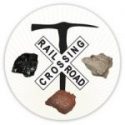The Historic Birmingham Mineral Railroad Signs Project is installing signs at various locations around the Birmingham area and in surrounding cities where the Birmingham Mineral Railroad ran during its century-long era (1884-1988) so that people will become more aware of that part of this area’s history.
People drive, walk, and bicycle every day in areas where the historic Birmingham Mineral Railroad (BMRR) ran throughout the Birmingham and surrounding areas without ever being aware that the BMRR was located in those places. Birmingham’s iron history is an important part of its overall history, and the BMRR was a significant part of that iron history. The network of rail lines that constituted the BMRR mainline tracks and its 31 branches was 253 miles long, which is equal to the distance from Birmingham to Mobile! Adding to that its various sidings and spurs to the mines, quarries, coke ovens, furnaces, etc., would put its length well over 300 miles. It was a major railroad that transported raw materials from the mines and quarries to the furnaces, coke from the coke ovens to the furnaces, pig iron from the furnaces to the various other facilities, and products from those facilities to major rail lines that connected to points across the Birmingham area and beyond. “This industrial railroad established the critical linkage between the individual elements of the iron industry, providing transportation between coal mines, ore mines, blast furnaces, rolling mills, and foundries.” (H.A.E.R. report No. AL-45, Page 3) The BMRR connected virtually all of the Birmingham area’s iron industry’s major facilities during the heyday of its operation. The BMRR was an extensive system of rail lines sometimes referred to as the “Birmingham Mineral Belt” or the “Birmingham Mineral Division.” As Ethel Armes stated in her book The Story of Coal and Iron in Alabama, the Birmingham Mineral Railroad unlocked the riches of Red Mountain back in the 1880s. In addition to the BMRR’s primary purpose as a Louisville and Nashville Railroad Company industrial railroad, L&N also provided regular passenger service on several of the major BMRR branches.
Use of the Birmingham Mineral Railroad continued in various forms and locations throughout the peak of Birmingham’s iron ore mining and iron and steel production era. The century-long era covered by the historic BMRR began with the building of the first segment (branch) in 1884 (in what is now Red Mountain Park) and continued with additional branches being added and used until they were abandoned at various times, with at least a portion of one branch continuing to be used to handle light industrial materials until 1984 and one branch continuing to be used to handle the movement of train cars until 1988 (H.A.E.R. report No. AL-11, Page 40). Even today, some segments of the BMRR are still in use as portions of active railroad lines in the Birmingham area.
